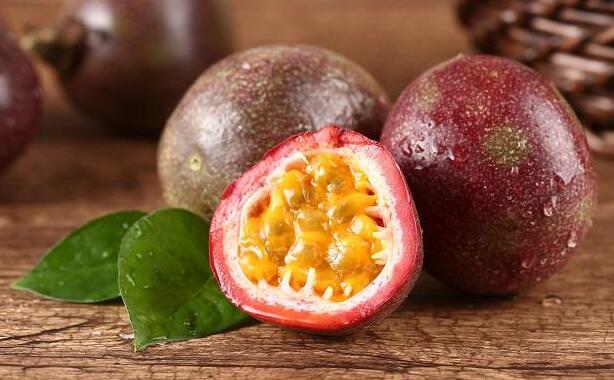
The name has nothing to do with the fruit being an aphrodisiac. Rather, it's named after the passion, or crucifixion, of the biblical Jesus. When Spanish missionaries to South America first discovered the flowers that turned into the fruit, they saw them as symbolic of the crucifixion. According to Specialty Produce, missionaries saw "the three stigmas as the three nails, the corona as the crown of thorns, the five stamens as the five wounds, the five petals and five sepals as the ten apostles and the purple petals as the purple robe."
How to pick a passion fruit
Like other fruits such as watermelon, heaviness is important when choosing passion fruit. When the fruit is heavy, that means it has plenty of moisture inside. The skin of the fruit, whether it's the more common purple passion fruit or the yellow/green version, passion fruit will be wrinkly when it's ripe. If you get one with smooth skin, make sure it has a little give to it when you squeeze it. If it does, you can leave it on the counter for three to five days to ripen up.
How to cut a passion fruit
Cutting a passion fruit is very easy. Simply cut it in half to reveal the fleshy insides. Once cut, the pulp and the edible seeds can be scooped out using a spoon. They can be eaten as is or used in a variety of recipes. The fruit is tart, so it's commonly combined with other ingredients.
Recipes for passion fruit
Passion fruit is versatile. It can be made sweet or savory, used as an ingredient in a dessert or a main dish, and made into a juice that can be used in several ways. These are just a few recipes that highlight passion fruit as an ingredient:
Passion Fruit Popsicle: This recipe keeps the seeds and pulp together and adds ginger to create a popsicle that appeals to grown-ups.
Mango and Passion Fruit Smoothie: A common way to use passion fruit is to add it to a smoothie, with or without seeds. This recipe calls for the seeds to be strained and combines it with the complementary flavor of mango.
Avocado and Mango Salad with Passion Fruit Vinaigrette: On top of a green salad with some slices of avocado and mango, passion fruit is used as a dressing to pull all the flavors together.
Passion Fruit Hot Sauce: Passion fruit juice is combined with hot peppers, oil and lime to create a creamy sauce that can be used as a dip for fried plantain chips or chicken empanadas.
Passion Fruit Sangria: The juice of passion fruit can be added to wine and fresh fruit to create a boozy sangria.
About that banana passionfruit
About banana passionfruit
There's another type of passion fruit, the banana passionfruit, (and it's frequently spelled as one word, not two). It's related to the egg-shaped passion fruit in that it has similar pulp and seeds inside, but it's often found as a wild-growing vine that can do serious damage to surrounding vegetation. It's edible and can be used like its passion fruit cousin.







